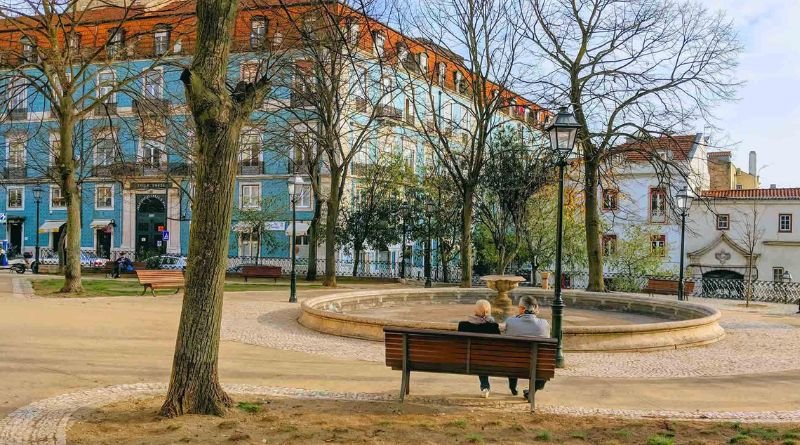Lisbon, the capital of Portugal, is a city of contrasts. It blends rich historical landmarks with modern design, vibrant nightlife with peaceful spots for reflection. As you wander through the city, you’ll notice how each neighborhood offers a unique atmosphere, giving you a glimpse into different facets of Lisbon’s culture, history, and lifestyle. From historic quarters filled with traditional Fado music to modern areas with trendy cafés and boutiques, Lisbon’s neighborhoods are as diverse as the city itself.
In this article, we’ll explore some of the most iconic Lisbon neighborhoods, each with its own distinct charm, and highlight what makes them worth visiting or living in.
1. Baixa and Chiado: The Heart of Lisbon
Baixa is the historic downtown area, often referred to as the heart of Lisbon. This neighborhood is known for its wide, grid-like streets, classical 18th-century architecture, and vibrant public squares like Praça do Comércio. Baixa was rebuilt after the devastating 1755 earthquake and is one of the most popular areas for tourists due to its iconic landmarks, bustling shopping streets, and close proximity to the riverfront.
Adjacent to Baixa is Chiado, a sophisticated and bohemian neighborhood. With its mix of old-world charm and contemporary cafes, Chiado is home to some of Lisbon’s most famous cultural institutions, like the historic Café A Brasileira and the São Carlos Theater. The area is also a hub for shopping, with both luxury boutiques and independent stores lining its streets. Chiado is perfect for those who enjoy a blend of history and modernity.
2. Alfama: The Soul of Lisbon
Alfama is Lisbon’s oldest and most traditional neighborhood, known for its winding cobblestone streets, steep hills, and colorful houses. It’s a place where you can truly feel the pulse of old Lisbon. Alfama has a deep connection to Fado, Portugal’s soulful traditional music, and many of the neighborhood’s bars and restaurants offer live performances of this melancholy genre.
One of the highlights of Alfama is the majestic São Jorge Castle, which offers panoramic views of the city. The neighborhood is also home to several important churches, including the Lisbon Cathedral (Sé de Lisboa). Though it’s a popular spot for tourists, Alfama maintains an authentic atmosphere, with its maze-like streets and narrow alleys, giving visitors a true taste of Lisbon’s past.
3. Bairro Alto: Lisbon’s Nightlife Hub
Bairro Alto is Lisbon’s iconic nightlife district, famous for its buzzing streets filled with bars, restaurants, and nightclubs. By day, Bairro Alto is a laid-back area with colorful buildings, quaint shops, and peaceful squares. But once the sun sets, the neighborhood transforms into a lively, energetic hotspot for both locals and tourists alike.
It’s the perfect place to enjoy a drink, listen to live music, or simply soak in the atmosphere. You’ll find everything from traditional Fado performances to trendy electronic music clubs. The steep, narrow streets of Bairro Alto add to the charm, and the neighborhood’s historic cafes and restaurants serve up delicious Portuguese cuisine.
4. Príncipe Real: Trendy and Family-Friendly
Príncipe Real has quickly become one of Lisbon’s most fashionable and family-friendly neighborhoods. Known for its vibrant atmosphere, trendy cafés, vintage shops, and green spaces, Príncipe Real attracts both young professionals and families looking for a more relaxed yet modern vibe.
The neighborhood is also home to some of Lisbon’s most beautiful parks, such as the Jardim do Príncipe Real, which offers a lovely place to relax or enjoy a picnic. Additionally, Príncipe Real is famous for its antique shops, which feature a mix of traditional Portuguese furniture and modern décor. If you’re looking for a trendy yet peaceful place to stay, Príncipe Real is a great option.
5. Belém: History and Monuments
Belém is a district that takes you back in time, showcasing Portugal’s rich maritime history. It’s located a bit farther from the city center but is a must-visit for anyone interested in Lisbon’s past. Belém is home to iconic monuments like the Belém Tower (Torre de Belém) and the Monument to the Discoveries, which celebrate Portugal’s Age of Exploration.
One of the highlights of Belém is the Jerónimos Monastery, a UNESCO World Heritage site and an architectural masterpiece. The area is also known for its traditional pastéis de nata (custard tarts), and the famous Pastéis de Belém bakery, which has been serving these delicious treats for over 180 years.
6. LX Factory: The Creative Hub
Located along the Tagus River, LX Factory is a creative hub housed in a former industrial complex. This neighborhood has transformed into one of Lisbon’s most dynamic and innovative areas, home to art galleries, design studios, restaurants, bars, and shops. LX Factory is a hotspot for creative minds, digital nomads, and those seeking a more contemporary atmosphere.
There are always events happening in LX Factory, from markets to live performances and pop-up shops. It’s the perfect place to explore if you’re looking for a taste of Lisbon’s cutting-edge art and culture scene.
7. Parque das Nações: Modern Lisbon
For those who prefer modern architecture and a more contemporary feel, Parque das Nações is a must-see. This area was redeveloped for the 1998 World Expo and is now a bustling district known for its sleek design, open spaces, and family-friendly activities. The neighborhood features the stunning Oceanário de Lisboa (Lisbon Aquarium), as well as the futuristic-looking Vasco da Gama Tower.
Parque das Nações is ideal for visitors who want to experience a more modern side of Lisbon. It’s home to shopping malls, restaurants, and several entertainment options, making it a great choice for families or those seeking a more spacious, tranquil area while still being close to the city center.
8. Campo de Ourique: Local Life and Great Food
Campo de Ourique is a largely residential neighborhood known for its vibrant local life, markets, and excellent food scene. While it may not be as tourist-heavy as some other districts, it offers a glimpse into the day-to-day life of Lisbon’s residents. It’s the perfect neighborhood for those who want to experience Lisbon as the locals do.
The area is known for its lively streets, local markets (like Mercado de Campo de Ourique), and delicious eateries, serving everything from traditional Portuguese dishes to international cuisine. Campo de Ourique is also home to beautiful parks and is well-connected to other parts of the city.
FAQs About Lisbon Neighborhoods
1. Which neighborhood is the best for tourists in Lisbon?
Baixa and Chiado are excellent neighborhoods for tourists due to their central location, proximity to landmarks, and vibrant atmosphere. Alfama and Belém are also must-visit areas for those interested in history.
2. Where can I find the best nightlife in Lisbon?
Bairro Alto is Lisbon’s most famous nightlife district, offering a wide variety of bars, clubs, and live music venues. However, Príncipe Real also has a growing nightlife scene with trendy spots.
3. Is Lisbon a family-friendly city?
Yes, many Lisbon neighborhoods, such as Príncipe Real, Campo de Ourique, and Parque das Nações, are great for families. They offer parks, museums, and activities for all ages.
4. What’s the best neighborhood for food in Lisbon?
Lisbon is known for its fantastic food scene, and neighborhoods like Baixa, Alfama, and Campo de Ourique offer a wide variety of traditional Portuguese cuisine and modern eateries.
5. Are Lisbon’s neighborhoods safe for tourists?
Lisbon is generally a very safe city, and most neighborhoods, including Baixa, Chiado, and Alfama, are safe for tourists. Like any major city, it’s best to stay aware of your surroundings, especially in more crowded areas at night.
6. Which neighborhood in Lisbon is the most affordable to stay in?
Alfama and Bairro Alto offer relatively affordable accommodations, though the prices can vary depending on the time of year. Campo de Ourique also offers good value for the quality of life it provides.
Conclusion
Lisbon’s neighborhoods are as diverse as the city itself, offering something for every kind of traveler. Whether you’re drawn to the historic charm of Alfama, the vibrant nightlife of Bairro Alto, or the modern vibe of Parque das Nações, each district has its own unique character and appeal. Exploring these neighborhoods will give you a deeper understanding of Lisbon’s cultural richness and help you uncover the many facets of this beautiful city.



